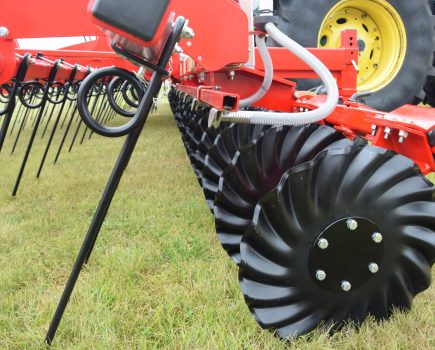Claimed to be the UK’s best-selling pick-up to farmers, the new Isuzu D-Max meets Euro 6 emissions and — here’s the important bit, according to Isuzu UK — without the use of AdBlue. Now you might think that farming folk would be more amenable to AdBlue than other pick-up buyers, bearing in mind that many tractors, combines and telehandlers have already been supping the exhaust-cleaning product for several years. But that’s simply not the case, says Isuzu. “Most of the farmers we’ve asked still don’t want the hassle of AdBlue,” comments Isuzu UK’s marketing director, Chris Hawken. “We’ve also heard stories of other pick-ups, where the AdBlue tanks are having to be topped up after just a few thousand miles. Otherwise their engines start to derate and go into limp-home mode. That’s clearly not ideal for anyone … and particularly not for those in remote rural locations.” So, how has Isuzu managed to achieve Euro 6 compliance without heading down the AdBlue route? The bottom line is that the firm has ‘gone small’, replacing its current 2.5-litre diesel motor with a 1.9-litre unit. Power output remains the same at 164hp, while torque is a little less. But, countering this, actual torque delivery to the wheels is reckoned to have been improved by directing the available torque through two new gearboxes — either a six-speed manual or six-speed auto. Changes within the engine itself extend to a new Bosch fuel injection system, a different home for the diesel particulate filter (DPF), a new NOx-reducing catalytic converter (with boron) and improved exhaust gas recirculation (EGR) via a variable-geometry turbocharger. The firm’s technical director, Phil Evans, explains: “When we first heard that Isuzu was reducing the D-Max’s engine size to meet Euro 6, we were concerned about the effect this would have on performance. But we’ve been pleasantly surprised. The power output is identical to the outgoing vehicle’s, and even the drop in torque — down from 400Nm at 1,400-2,000rpm to 360Nm at 2,000-2,500rpm — has been addressed by the transmission’s lower, shorter initial gears and a different final drive ratio. “Our tests have shown that, not only do we achieve a reduction in vehicle weight and fuel consumption from fitting a smaller engine, but the new D-Max also has an improved payload, is quieter and is generally more lively.” To put some figures on those claims, and using the 4×4 manual double-cab as an example: CO2 emissions drop 4.7% to 183g/km; combined fuel consumption reduces by 4.4% to 40.4mpg; and payload increases by 26kg to 1,106kg. Critically, it should be noted that the D-Max’s towing capacity remains unchanged at 3.5t. Driveline aside, the other differences between old and new D-Max largely come down to relatively modest tweaks to exterior look and interior spec/kit. On the former there are new lights, new wheels, new colours and a redesigned bumper/grille; whereas the latter runs to items such as Hill Start Assist and Variable Descent Control, new audio systems and touch-screen displays, and a generally improved feature offering across the full line of Utility, Eiger, Yukon, Utah and Blade models. Not surprisingly, new models mean new prices — they start at £15,749 excl. VAT for a single-cab 4×2 Utility and top out at £27,999 for a double-cab 4×4 auto Blade. Isuzu says the new Euro 6 D-Max will start to appear in UK showrooms later this month.
Farmers’ friend gets a makeover

Claimed to be the UK’s best-selling pick-up to farmers, the new Isuzu D-Max meets Euro 6 emissions and — here’s the important bit, according to Isuzu UK — without the use of AdBlue. Now you might think that farming folk would be more amenable to AdBlue than other pick-up buyers, bearing in mind that many tractors, […]

















